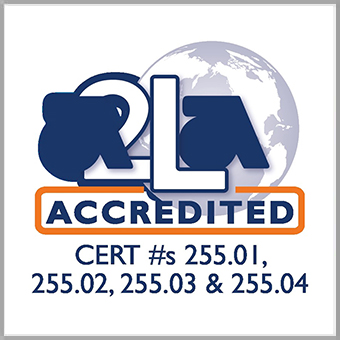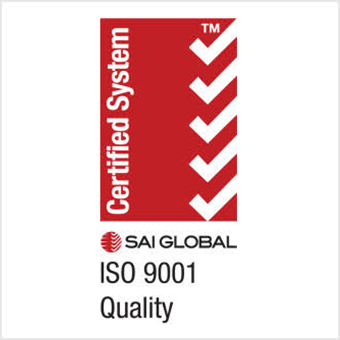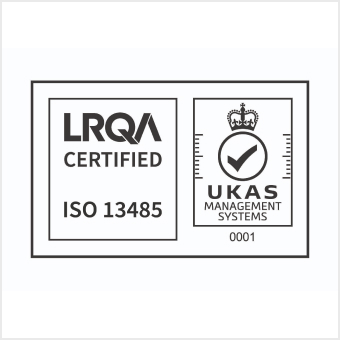INTERMEDIATE TO ADVANCED COMPOUNDING AND TESTING OF RUBBER (2.5 Day COURSE + 1/2 Day Tour/ARDL Overview)
Day 1
1. 8:30 – 8:45 a.m. – Introduction to Compounding
a. Basic Ingredients in Rubber Compounds
b. Rubber Formulation
2. 8:45 a.m.- 12:00 p.m. – Elastomer / Rubber Chemistry
a. 8:45 – 10:15 a.m. – Polymer Overview
i. Polymerization and Polymer Manufacture – Major Polymerization Methods
ii. Polymer Terminology and ASTM Polymer Nomenclature
iii. Distinct Regions Over Temperature Range–Glassy, Tg, Rubbery, Flow
iv. Viscoelastic Curves–Elastic Modulus, Viscous Modulus, Tan Delta
v. Time-Temperature Superposition Theory
vi. Viscoelastic Properties
vii. Chemical Structural Features that Affect Tg
viii. 10:15 – 10:30 a.m. – Break
b. 10:30 a.m. – 1:30 p.m. – Common Elastomers
i. NR: IR, Cis-1,3-polyisoprene Rubber
ii. SBR: Styrene Butadiene Rubber
iii. BR: Butadiene Rubber
iv. EPDM: Ethylene Propylene Diene Rubber
v. IIR: Butyl Rubber, CIIR: Chlorobutyl Rubber, BIIR: Bromobutyl Rubber
vi. Nitrile Rubbers: NBR, HNBR, XNBR
vii. CR: Neoprene Polychloroprene Rubber
viii. CSM: Chlorosulfonated Polyethylene Rubber
ix. ECO: Epichlorohydrin Rubber
x. ACM: Polyacrylic Rubber
xi. 12:00 – 1:00 p.m. – Lunch
xii. Silicone Rubber
xiii. AEM: Ethylene-acrylic Rubber
xiv. FKM: Fluorocarbon Rubber
xv. TPE: Thermoplastic Elastomers
xvi. AU/EU/TPU Urethanes
xvii. Comparison of Elastomers Properties
3. 1:30 – 2:45 p.m. – Fillers and Reinforcement
a. 1:30 – 1:45 p.m. – Introduction to Fillers
i. Filler Effects in Rubber
ii. Particle Size
iii. Particle Shape
iv. Surface Area
v. Surface Activity
b. 1:45 – 2:45 p.m. – Mineral Fillers
i. Types of Mineral Fillers
ii. Chemistry of Fillers
iii. Processing of Natural Mineral Fillers
iv. Reinforcing Properties of Fillers in Rubber
v. Mineral Filler Typical Properties (R. T. Vanderbilt Chart)
vi. Surface Activity and Surface Treatments
vii. Clay
viii. Calcium Carbonate
ix. Silicas
x. Silica – Carbon Black Comparisons
xi. Talc
xii. Titanium Dioxide
xiii. Diatomaceous Earth
xiv. Reinforcing Resins
xv. Filler Comparison in Rubber Compounds
xvi. Break 2:45 – 3:00 p.m.
c. 3:00 – 3:45 p.m. – Carbon Black
i. History of Carbon Black
ii. Manufacture – Oil Furnace, Thermal
iii. Carbon Black Particles – Aggregates and Agglomerates
iv. Carbon Black and Rubber Properties
v. Carbon Black Definitions
vi. ASTM Carbon Black Classification
vii. Structure and Surface Area
viii. Carbon Black Tests
ix. Carbon Black Grades and Properties
x. Carbon Black Loading for Hardness
xi. Rubber Mixing with Carbon Black
xii. Carbon Black Dispersion
4. 3:45 – 4:30 p.m. – Plasticizers, Petroleum Process Oils
a. Petroleum Process Oils
i. Introduction
ii. Oil Composition
iii. Refining Process
iv. Typical Tests for Oils
v. ASTM Petroleum Oil Characteristics
vi. Oil Effects on Compound Tg
vii. Properties of Process Oils
viii. Oil Effects on Rubber Properties
ix. Compatibility of Oil with Rubber
x. Restrictions on Aromatic Oil
xi. Substitutes for Aromatic Oil
xii. ASTM Reference Oils and Fluids
INTERMEDIATE TO ADVANCED COMPOUNDING AND TESTING OF RUBBER
Day 2
Section 4 Plasticizers – Continued, 8:30 – 9:30 a.m.
b. Non-Petroleum Plasticizers
i. Selection of Plasticizers
ii. Rubber Compatibility (HallStar chart)
iii. Comparison of Plasticizers
iv. Adipates
v. Azelates
vi. Benzoates
vii. Mono-esters
viii. Phosphate Esters
ix. Phthalates
x. Polymeric Polyesters
xi. Sebecates
xii. Trimellitates
xiii. Epoxidized
xiv. Tallates
xv. Miscellaneous
c. Process Aids
i. How Process Additives Work
ii. Types of Process Aids
iii. Fatty Acid Derivatives
iv. Hydrocarbon and Coumarone-Indene Resins
v. Novolak Phenolic Resins
vi. Peptizers
vii. Pine-Based Chemicals
viii. Organosilicones
ix. Oxidized Asphalt and Coal Tar Products
x. Waxes
xi. Tackifier Performance
5. 9:30 – 10:30 a.m. – Antidegradants
a. Oxidation and Antioxidant Chemistry
b. Ozonolysis and Antiozonant Chemistry
c. Antidegradant Applications
d. Types of Antioxidants
e. Types of Antiozonants
f. Waxes
g. Persistence of Antidegradants
h. Antidegradant Performance Comparison
i. Break 10:30 – 10:45 a.m.
6. 10:45 a.m. – 2:45 p.m. – Vulcanization
a. 10:45 – 12:00 a.m. – Sulfur Cure Vulcanization
i. Vulcanization Introduction
ii. Sulfur
iii. Sulfur Donors
iv. Accelerator Selection
v. Sulfur and Accelerator Cure Mechanism
vi. Accelerator Classes – Cure Rate Vs. Time to Scorch
vii. Accelerator Types
1. Amines and Aldehyde Amines
2. Dithiocarbamates
3. Dithiophosphates
4. Guanidines
5. Sulfenamides and Sulfenimimdes
6. Thiazoles
7. Thioureas
8. Thiurams
9. Xanthantes
10. Miscellaneous Accelerators
viii. Activators for Sulfur Cure Systems
1. Zinc Oxide
2. Zinc Fatty Acids
3. Fatty Acids
4. Miscellaneous Activators
ix. Pre-Vulcanization Inhibitors
x. Retarders
xi. Lunch 12:00 – 1:00 p.m.
xii. 1:00 – 1:45 p.m. – Sulfur Cure Vulcanization Continued
xiii. Vulcanization Effects on Rubber Properties
1. Crosslink Density
2. Types of Sulfur Cure Systems
3. Crosslink Type
4. Accelerator Effects on Crosslink Type
5. Non-curative Compound Ingredients Effects on Vulcanization
xiv. Solubility Levels of Accelerators in Various Polymers
xv. Vulcanization Tests
b. 1:45 – 2:30 p.m. – Regulatory Issues with Curatives
i. ETU and Replacements,
ii. Guanadine and Replacements
iii. Nitrosamines and Accelerators
iv. Equal Molar Replacement of Accelerators
v. Non-nitrosamine Cure Systems
vi. Break 2:30 – 2:45 p.m.
c. 2:45 – 3:15 p.m. – Non-sulfur Cure Systems
i. Resol Phenol-Formaldehyde Resin Cure
ii. Metallic Oxide Cure
iii. P-Quinonedioxime Cure
iv. Peroxide Cure
1. Introduction
2. Peroxides and Co-agents
3. Compounding Ingredients to Avoid with Peroxide Cures
v. Diamine Cure
vi. Bisphenol Cure
7. 3:15 p.m. – 4:30 p.m. – Adhesion
a. Adhesion to Brass and Brass Coated Steel
b. Adhesion to Other Metals
c. Adhesion to Textiles
INTERMEDIATE TO ADVANCED COMPOUNDING AND TESTING OF RUBBER
Day 3
8. 8:30 – 8:45 a.m. – Sponge Rubber and Foaming Agents
a. Types of Sponge Rubber
b. Open and Closed Sponge
c. Types of Blowing Agents
d. Properties that Affect Foaming Agents
e. Activators for Foaming Agents
9. 8:45 – 9:00 a.m. – Non-Flammable Compounding and Flame Retardants
a. Rubber Types and Flammability
b. Types of Flame Retardants
c. Mixing with Flame Retardants
d. Flammability Tests
10. 9:00 – 9:30 a.m. – Compound Design, Physical Testing and Review of ASTM D2000
a. Questions to Ask When Developing a New Rubber Compound
b. Some Common Compound Testing
c. ASTM D2000 Line Call Out
11. 9:30 – 9:45 a.m. – Analytical Chemical Testing
a. TGA
b. FTIR
c. Chemical Analysis, ASTM D297
d. Pyrolysis GC/MS
e. Thin Layer Chromatography
f. DSC
g. Formulation Reconstruction
12. 9:45 – 10:00 a.m. – Warehouse Storage of Rubber Chemicals
a. Flammable and Combustible Liquids
b. Flammable Solids
c. Poisons (Toxins)
d. Water Reactive
e. Chemicals that Degrade Other Chemicals
f. Organic Peroxides
13. 10:00 – 10:15 a.m. – Useful References – Bonnie Stuck, ARDL
a. References
b. Break 10:15 – 10:30 a.m.
14. 10:30am – 11:45 a.m. – Processing
a. Types of Mixers
b. Rotor Designs
c. 1 Pass versus 2 Pass Mixing
d. Conventional versus Upside Down Mixing
e. Batch Sizing
f. Common Polymer Drop Temperatures
g. Common Mixing Problems and Fixes
h. Process and Quality Testing
i. Molding
j. Extrusion
k. Calendering
l. Autoclave Steam Curing
15. 12:00 – 1:00 p.m. Lunch
16. 1:00 – 4:30 p.m. Tour ARDL (3 buildings)




